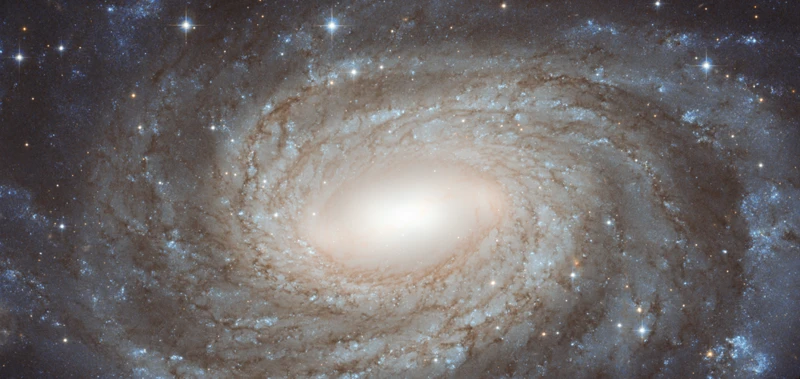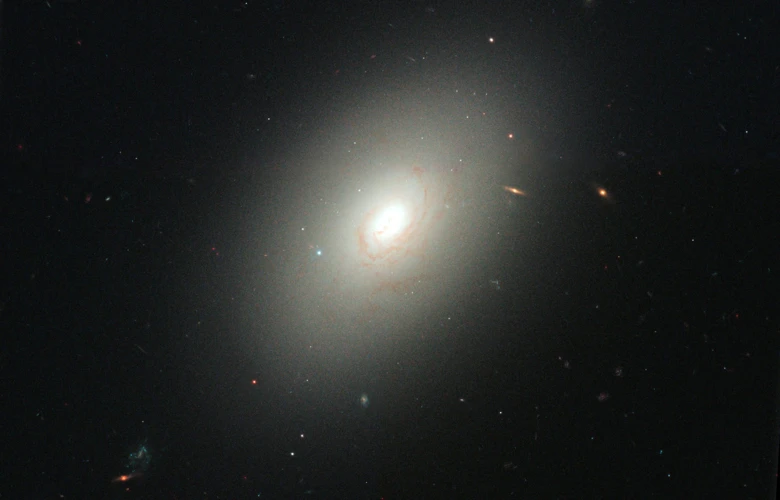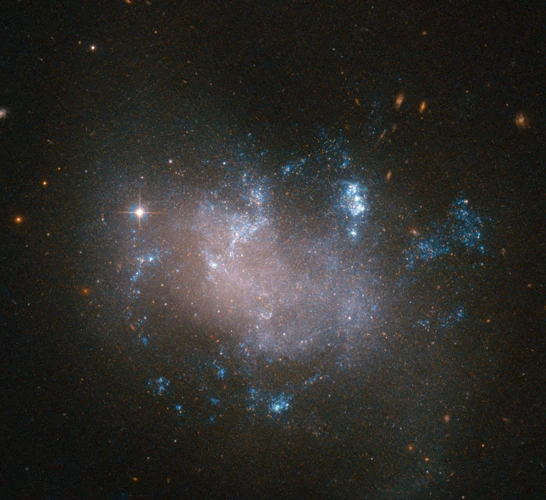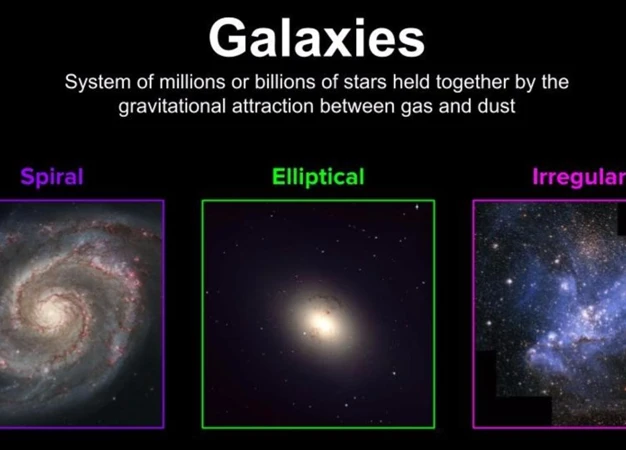The vastness of the universe holds a mesmerizing array of celestial wonders, and galaxies are at the heart of this cosmic spectacle. Understanding the different types of galaxies is crucial in unraveling the mysteries that lie beyond our own Milky Way. From the majestic spirals that gracefully spin through space to the enigmatic irregular formations that defy traditional classifications, each type of galaxy offers a unique glimpse into the vastness and diversity of the cosmos. Join us on a captivating journey as we delve into the characteristics and examples of spiral, elliptical, irregular, and lenticular galaxies, exploring their stunning beauty and shedding light on their intricate nature. Whether you are an astronomy enthusiast or simply curious about the wonders of the universe, this article will ignite your sense of wonder and expand your knowledge of the cosmic realm.
Spiral Galaxies

Spiral galaxies, with their mesmerizing arms gracefully curving outward like celestial pinwheels of stardust, are renowned for their beguiling beauty and intriguing structure. Characterized by a central bulge surrounded by sweeping arms, these galaxies are often home to a multitude of young, hot stars and interstellar dust and gas. The arms of spiral galaxies, such as the iconic Andromeda Galaxy or our own Milky Way, twist and swirl as they spiral outward, captivating astronomers and stargazers alike. These galaxies are believed to undergo both continuous evolution and cosmic collisions, shaping their fascinating structures over billions of years. The intricate dance of spiral galaxies provides us with insights into the vastness and complexity of the universe, while also fueling our curiosity to explore the secrets that lie within their awe-inspiring depths.
Characteristics
When it comes to the characteristics of spiral galaxies, several key features set them apart from other types of galaxies in the cosmos. Here are some notable attributes:
1. Disc-like Structure: Spiral galaxies are renowned for their distinct disc-like structure, with a central bulge and spiral arms extending outward. This unique shape is formed by the gravitational forces acting on the stars, gas, and dust within the galaxy.
2. Spiral Arms: The most prominent feature of spiral galaxies is their elegant spiral arms. These arms are composed of young, hot stars, as well as interstellar dust and gas. The arms often exhibit clear patterns and can vary in tightness and number, resulting in beautiful swirling patterns.
3. Central Bulge: At the core of a spiral galaxy lies a dense, central bulge. This bulge is typically spherical or elliptical in shape and is composed of older stars. The bulge houses a high concentration of stars and a supermassive black hole at its center, the latter of which plays a crucial role in the galaxy’s evolution and dynamics.
4. Star Formation: Spiral galaxies are known for their active star-forming regions, particularly in their spiral arms. These regions are characterized by the presence of massive, young stars that are born from the condensing gas and dust. The abundance of star formation contributes to the galaxy’s vibrant appearance.
5. Different Subtypes: Spiral galaxies can be further classified into different subtypes based on the appearance of their arms and central bulge. This classification includes grand design spirals, flocculent spirals, and barred spirals.
Understanding these distinctive characteristics helps astronomers differentiate spiral galaxies from other galactic formations and provides valuable insights into their formation, evolution, and interaction with surrounding celestial phenomena. To explore deeper into the mysteries of the cosmos, scientists continue to investigate phenomena like supermassive black holes and origins of irregular galaxies to unravel the intricate nature of spiral galaxies.
Examples
When it comes to examples of spiral galaxies, there are several notable ones that have captured the attention of astronomers and space enthusiasts. Some of these include:
1. The Milky Way: Our very own galaxy, the Milky Way, is a magnificent spiral galaxy that spans an estimated 100,000 light-years. It is home to billions of stars, including our Sun, and is adorned with beautiful spiral arms that are dotted with clusters of stars, nebulae, and interstellar dust.
2. The Andromeda Galaxy: Located approximately 2.537 million light-years away from Earth, the Andromeda Galaxy, also known as Messier 31, is another stunning spiral galaxy. It is the closest spiral galaxy to the Milky Way and is slightly larger than our own galaxy. The Andromeda Galaxy boasts a spiral structure that can be observed even with the naked eye under dark skies.
3. The Whirlpool Galaxy: Situated in the constellation Canes Venatici, the Whirlpool Galaxy, also known as Messier 51A, is a beautiful example of a grand-design spiral galaxy. It is notable for its striking spiral arms that are enhanced by the presence of a smaller companion galaxy, NGC 5195, seen interacting with it gravitationally.
4. The Pinwheel Galaxy: Also known as Messier 101, the Pinwheel Galaxy is located in the constellation Ursa Major. It gets its name from its remarkably well-defined spiral arms that resemble the pattern of a pinwheel. The Pinwheel Galaxy is not only visually captivating but also serves as an important object of study for astronomers investigating galaxy structure and dynamics.
These examples represent a mere fraction of the captivating spiral galaxies that populate the universe, each with its own unique features, stellar populations, and cosmic stories to tell. As astronomers continue to explore and study these mesmerizing structures, we gain a deeper understanding of the intricate tapestry of the cosmos.
Elliptical Galaxies

Elliptical galaxies, with their smooth and oval-shaped appearances, stand as enigmatic entities in the tapestry of the cosmos. These galaxies, unlike their spiral counterparts, lack the distinctive arms and disk structure. Characterized by their ellipsoidal form, elliptical galaxies often house an abundance of older stars, creating a population dominated by aging stellar populations. They range from nearly spherical shapes, denoted as E0, to more elongated ellipticals, classified as E7 on the Hubble tuning fork diagram. With a vast range in sizes, elliptical galaxies can be colossal giants, harboring billions of stars, or smaller in scale. Their intriguing lack of spiral arms has puzzled astronomers for decades, raising questions about their formation and evolutionary history. By studying these enigmatic cosmic objects, scientists gain valuable insights into the vast diversity of galactic structures and the underlying mechanisms that shape our universe.
Characteristics
- Distinctive Shape: Spiral galaxies are named after their distinct shape, with their characteristic arms spiraling outward from a central bulge.
- Multiple Spiral Arms: These galaxies typically exhibit multiple spiral arms that curve outward, giving them their distinctive appearance.
- Disk-like Structure: Spiral galaxies have a disk-like structure, with a central bulge and flat, rotating disk.
- Rich in Gas and Dust: Spiral galaxies contain substantial amounts of interstellar gas and dust, which provide the raw materials for star formation.
- Star Formation: Due to the abundance of gas and dust, spiral galaxies often experience active star formation, giving rise to young, hot stars.
- Arms with Stellar Density Waves: The spiral arms of these galaxies are not composed of stars alone. Instead, they are structured by waves of higher stellar density that create the appearance of arms.
- Barred Spiral Subtype: Some spiral galaxies exhibit a central bar structure that cuts through their central region, known as barred spiral galaxies.
- Varied Sizes: Spiral galaxies come in various sizes, ranging from small dwarf galaxies to massive giants.
These characteristics collectively contribute to the mesmerizing beauty and intricate nature of spiral galaxies, capturing the imagination of astronomers and stargazers alike.
Examples
When it comes to spiral galaxies, the cosmos showcases a mesmerizing variety that captivates astronomers and stargazers alike. Here are a few stunning examples of spiral galaxies:
- The Milky Way: Our very own home galaxy, the Milky Way, is a spiral galaxy that dazzles with its beauty. It stretches across vast distance, harboring billions of stars, including our own Sun, within its spiral arms.
- The Andromeda Galaxy: Located approximately 2.5 million light-years away from us, the Andromeda Galaxy is the closest spiral galaxy to the Milky Way. Its stunning spiral structure is visible even with the naked eye, making it a favorite target for amateur astronomers.
- The Whirlpool Galaxy: Also known as Messier 51a, the Whirlpool Galaxy is a majestic example of a grand design spiral galaxy. Situated about 31 million light-years from Earth, it captivates observers with its prominent spiral arms, which are adorned with sparkling regions of star formation.
- The Pinwheel Galaxy: Officially known as Messier 101, the Pinwheel Galaxy resides approximately 21 million light-years away from us. Its spiral arms, swept with intricate patterns of stars, gas, and dust, resemble a whirlpool bursting with celestial colors.
- The Triangulum Galaxy: The Triangulum Galaxy, also called Messier 33, is a spiral galaxy located relatively close to the Milky Way, only about 3 million light-years away. A showpiece of the northern skies, this galaxy’s spiral arms trace out a mesmerizing pattern of star clusters, glowing nebulae, and dark lanes of dust.
These examples represent just a small fraction of the countless spiral galaxies scattered throughout the universe. Each one is unique in its own right, with its distinctive structure and stellar composition. Exploring these remarkable galactic formations unfolds a captivating narrative of cosmic beauty and celestial evolution.
Irregular Galaxies

Irregular galaxies, mysterious and captivating in their disarray, defy the traditional classifications that neatly categorize their cosmic counterparts. With their peculiar shapes and erratic structures, these enigmatic galaxies perplex astronomers and beckon us to delve deeper into their origins and formations. Characterized by their lack of a distinct shape or symmetry, irregular galaxies are often a result of cosmic collisions or gravitational interactions with other galaxies. These galactic anomalies offer a unique opportunity to investigate the origins and evolution of galaxies, as they present a pristine canvas free from the constraints of established structures. From the captivating Large Magellanic Cloud to the sparkling NGC 1427A, irregular galaxies possess an otherworldly allure that celebrates the unanticipated and the untamed in the vast tapestry of the universe.
Characteristics
When examining the characteristics of spiral galaxies, several distinctive features come to light. Here are some key attributes of these mesmerizing celestial formations:
1. Spiral Arms: The most recognizable feature of spiral galaxies is their spiral arms, which extend outward from the central bulge. These arms are composed of stars, gas, and dust, creating intricate patterns that can vary in tightness and symmetry.
2. Central Bulge: At the heart of spiral galaxies lies a dense, compact region known as the central bulge. This bulge is typically spherical or elliptical in shape and contains older stars. It also hosts a supermassive black hole, exerting its gravitational pull on the surrounding matter.
3. Disk Structure: Spiral galaxies have a relatively flat and rotating disk structure. The disk is composed of both young and old stars, along with interstellar material such as gas and dust. This disk provides the platform for the spiral arms to extend outward.
4. Star Formation: Spiral galaxies are regions of active star formation. The gas and dust within the spiral arms serve as fuel for the birth of new stars. These young, hot stars can be found predominantly in the arms, whereas the older stars are more concentrated in the central bulge.
5. Types: Spiral galaxies are further classified into two main types – barred and unbarred. Barred spirals have a bar-shaped structure that extends through the central bulge, while unbarred spirals lack this feature.
6. Size and Mass: Spiral galaxies come in various sizes, ranging from small dwarf spirals to large and massive spirals. They can contain billions of stars and have significant amounts of interstellar matter.
Understanding the characteristics of spiral galaxies allows us to appreciate their complexity and diversity. Each spiral galaxy is a unique masterpiece, shaped by the forces of gravity, cosmic collisions, and ongoing stellar evolution.
Examples
Examples of spiral galaxies span the vast expanse of the universe, each exhibiting unique characteristics and captivating features. Some prominent examples include:
1. The Andromeda Galaxy: As the closest spiral galaxy to our Milky Way, the Andromeda Galaxy (M31) stands as a marvel in our night sky. With its stunning spiral arms extending over 200,000 light-years, it is a spectacular sight to behold. This galaxy also hosts a supermassive black hole at its center, offering fascinating insights into the role of these enigmatic entities in galaxy formation.
2. The Whirlpool Galaxy: Also known as Messier 51 or M51, the Whirlpool Galaxy showcases a captivating spiral structure intertwined with a smaller companion galaxy, creating a stunning visual spectacle. Located approximately 23 million light-years away, the Whirlpool Galaxy is a popular subject of study in astronomy due to its proximity and the intricate dynamics between the two galaxies.
3. The Pinwheel Galaxy: Officially known as Messier 101 or M101, the Pinwheel Galaxy boasts impressive spiral arms that stretch over 170,000 light-years. Its intricate structure has fascinated astronomers, allowing them to study star formation, the presence of dust lanes, and the dynamics of galactic disks. This galaxy’s prominent features make it a favorite among stargazers and astrophotographers.
4. The Triangulum Galaxy: Also referred to as Messier 33 or M33, the Triangulum Galaxy is a smaller spiral galaxy located approximately 3 million light-years away. Its delicate arms and starry outskirts make it a celestial gem, and it serves as a neighboring satellite galaxy to both the Andromeda Galaxy and our own Milky Way.
Each of these examples showcases the splendor and diversity of spiral galaxies, offering astronomers and space enthusiasts an opportunity to study the intricate processes that shape our cosmos. Whether it’s the awe-inspiring size of the Andromeda Galaxy or the entwined beauty of the Whirlpool Galaxy, these celestial wonders continue to inspire us with their celestial dance through the cosmos.
Lenticular Galaxies
Lenticular galaxies, often described as the hybrid of spiral and elliptical galaxies, occupy a unique space in the cosmic tapestry. These intriguing galactic specimens possess characteristics of both their spiral and elliptical counterparts, making them a fascinating subject of study for astronomers. Characterized by a central bulge like elliptical galaxies and a disk-like structure similar to spiral galaxies, lenticular galaxies lack the distinct spiral arms seen in their spiral counterparts. This blend of features sets them apart and offers a glimpse into the diverse nature of galactic formations. Lenticular galaxies often contain older stars and exhibit a more uniform distribution of stellar populations compared to spiral galaxies. Some notable examples of lenticular galaxies include NGC 5866 and NGC 2787. By examining the properties and evolution of lenticular galaxies, scientists gain valuable insights into the potential transitional phases between different types of galaxies, further enriching our understanding of the cosmic panorama.
Characteristics
Spiral galaxies possess a distinctive set of characteristics that set them apart from other galactic classifications. One notable feature is their spiral arms, which give them their name. These arms radiate outward from a central bulge, creating a visually captivating structure. The arms are typically defined by a combination of young, luminous stars, dust, and gas. This stellar nursery serves as a constant source of new star formation, resulting in a higher concentration of hot, blue stars in these regions. In contrast, the central bulge of a spiral galaxy contains an older population of stars, often densely packed. Another characteristic is the presence of a supermassive black hole at the center of the galaxy, which exerts a gravitational pull on nearby stars and plays a role in galactic evolution. Additionally, spiral galaxies tend to possess a rotating disk-like shape, with their spiral arms winding around this central disk. The precise shape of the arms and the tightness of their spirals can vary between different spiral galaxy subtypes, creating a wide range of stunning visual representations in the cosmos. Understanding these unique characteristics helps us appreciate the intricate nature of spiral galaxies and their role in the cosmic tapestry.
Examples
of spiral galaxies abound in the cosmos, each showcasing its unique features and captivating allure. One notable example is the Andromeda Galaxy, also known as Messier 31. Located a staggering 2.537 million light-years away from Earth, Andromeda is the closest spiral galaxy to our Milky Way. With its grand spiral arms stretching across a remarkable 260,000 light-years, this majestic galaxy is a sight to behold. Another prominent example is the Whirlpool Galaxy (Messier 51), which lies approximately 23 million light-years away. Its striking spiral arms and fantastic dust lanes have made it a favorite target for amateur and professional astronomers alike. Additionally, the Pinwheel Galaxy (Messier 101) is another mesmerizing spiral galaxy worth mentioning. Situated about 21 million light-years away, it showcases its intricate spiral structure adorned with bright and young blue stars. These examples, among countless others, demonstrate the incredible diversity and captivating beauty of spiral galaxies scattered throughout the vast expanses of our universe.
Conclusion
In conclusion, the study of galaxies opens up a world of wonder and endless possibilities for exploration. Through our exploration of the different types of galaxies, including spiral, elliptical, irregular, and lenticular, we have gained valuable insights into the vastness, beauty, and diversity of the cosmos. Each type offers its own unique characteristics and examples that both amaze and challenge our understanding of the universe. From the graceful curves of spiral galaxies to the mysterious and irregular formations, we are reminded of the infinite wonders that await us beyond our own galactic neighborhood. The journey to comprehend the intricacies of galaxies is an ongoing one, as scientists continue to delve deeper into their formation, evolution, and origins. By studying galaxies, we not only expand our knowledge of the cosmos but also gain a deeper appreciation for our place within it. So let us continue to marvel at the celestial wonders that surround us and endeavor to unlock the secrets that lie within these awe-inspiring celestial bodies.
Frequently Asked Questions
What are the different types of galaxies?
There are four main types of galaxies: spiral, elliptical, irregular, and lenticular. Each type has unique characteristics and structures.
How are spiral galaxies formed?
Spiral galaxies are formed through the gradual accumulation of gas and dust, which eventually condense and collapse under the influence of gravity. This process leads to the formation of a central bulge surrounded by spiral arms.
What are the characteristics of elliptical galaxies?
Elliptical galaxies are predominantly featureless and have an oval or elliptical shape. They are composed of older stars and contain little interstellar gas and dust. These galaxies are known for their immense size and typically have a large central bulge.
Are irregular galaxies common?
Irregular galaxies are less common than spiral or elliptical galaxies. They are irregular in shape and lack a distinct structure. Irregular galaxies often exhibit active star-forming regions and are considered to be in a dynamic state of evolution.
What makes lenticular galaxies unique?
Lenticular galaxies, also known as S0 galaxies, display characteristics of both spiral and elliptical galaxies. They have a central bulge like elliptical galaxies but lack the pronounced spiral arms. Lenticular galaxies are often found in galaxy clusters.
Can we see other spiral galaxies besides the Milky Way?
Yes, we can observe other spiral galaxies besides the Milky Way. The most notable example is the Andromeda Galaxy, which is the nearest spiral galaxy to our own, located about 2.5 million light-years away.
Are all elliptical galaxies the same size?
No, elliptical galaxies can vary greatly in size. They can range from small dwarf ellipticals to colossal giant ellipticals that can be thousands of times larger than the Milky Way.
Do irregular galaxies have any structurally identifiable features?
Unlike spiral or elliptical galaxies, irregular galaxies do not have distinct structural features. They are often chaotic in appearance and lack the well-defined symmetry observed in other galaxy types.
Are there any famous examples of irregular galaxies?
Yes, two famous examples of irregular galaxies are the Magellanic Clouds, which are satellite galaxies of the Milky Way. The Large Magellanic Cloud and the Small Magellanic Cloud are visible from the Southern Hemisphere and contain active regions of star formation.
Do lenticular galaxies play a significant role in the universe?
While lenticular galaxies are not as well-known as spirals or ellipticals, they play an important role in the cosmic landscape. They are often found in galaxy clusters, where they contribute to the formation and evolution of these clusters.








